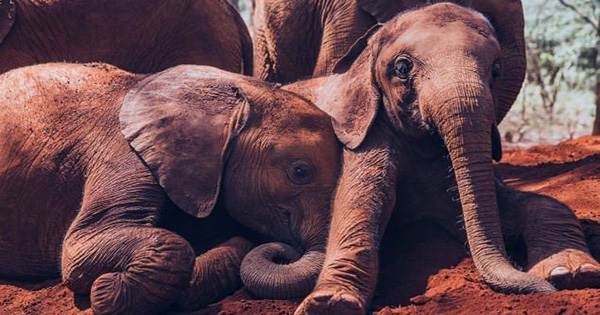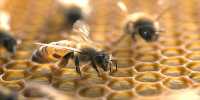Poaching is one of the main threats to their species or to species hunted as trophies. These include elephants whose desperate situation thrown out earlier this year when it announced that both species of African elephant critically endangered.
Fortunately, individuals and organizations are working to protect these animals, and the successful rescue of only one animal is a cause for celebration in the declining population. One such hilarious scene recently recorded by Kenya’s Sheldrick Wildlife Trust (SWT), which warned of a baby elephant trapped in a remote area of the Tana River. As if the place was not complicated enough, the calf’s increasingly anxious family was still in the area, which meant a rescue effort could be dangerous for the team.
However, there was no possibility of freeing himself from the baby elephant rope trap, attached a part embedded deep in the ground, a rescue mission was launched.
The SWT now operates and funds 17 mobile field teams that are ready to respond to such calls in Kenya, in an effort to reduce the number of animals that die in the trap, including endangered species. These teams work in partnership with the Kenya Wildlife Service to identify and destroy traps and have removed more than 160,000 to date, Brandford explained. When the team arrived at the scene by helicopter, a community scout and some local residents were able to reach the baby elephant using a thickness so they could monitor the situation until help arrived. Once rescuers landed, the helicopter monitored the adult elephant so they could work to keep the team safe.
Once the baby safely anesthetized, they were able successfully cut the trap that was already cutting the movement on the baby’s legs. For their efforts, they rewarded with the satisfying sight of running back to the child’s family after waking up from their immoral snooze. “Every animal that is killed or injured in a trap is one too many and a blow to biodiversity,” Brandford wrote. “Fortunately, Kenyans are looking for their wildlife: tour guides, tourists and operators (although in the current climate it is less likely to be due to tourists), rangers, NGOs and conservatives all provide eyes and ears on the ground and many of the reports we receive about injured animals Let’s get up.
“Our SWT / KWS anti-pitching teams and aerial units provide on-the-spot assistance and help veterinary teams identify injured animals when needed. Since veterinary teams are fully mobile, operated in five core ecosystems supported by the Sky Vets Initiative, can be deployed anywhere, so we can reach these animals no matter how far away we are.” SWT’s conservation projects funded by grants and their anti-poaching teams are more important than ever because of the bushmeat sneering Report. Visit their website to learn how you can help.














